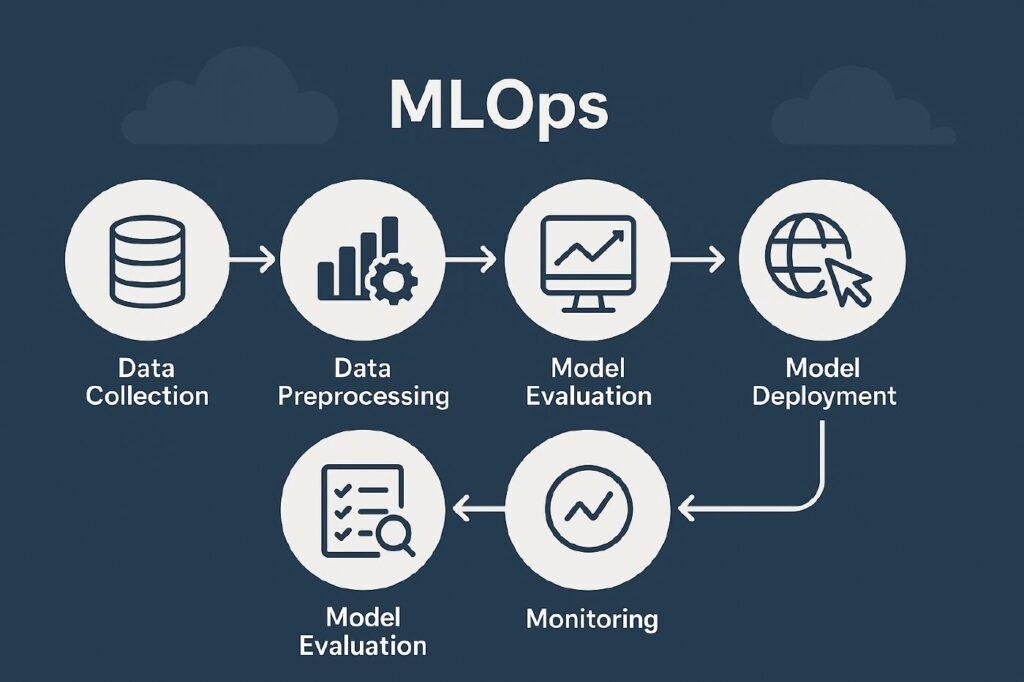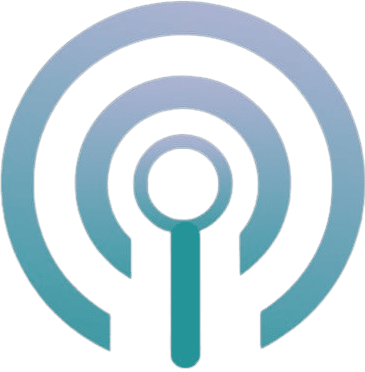In today’s speedily paced AI-driven landscape, building machine learning models is just the start. Operationalizing them at scale is where the real challenge lies. Drink to the world of MLOps — a practice that merges machine learning with DevOps to streamline ML workflows. This MLOps companion is designed for AI practitioners, inventors, and IT leaders who seek to understand its value, implementation, and career scope. We’ll walk you through the MLOps guide. Additionally, it’ll contain tools, real-world MLOps examples, cloud platforms, and certifications that can elevate your ML systems.

What is MLOps and Why It Matters Today?
MLOps( Machine Learning Operations) focuses on automating and enhancing the lifecycle of ML models. This MLOPs guide brings together data scientists, ML engineers, and IT operations to guarantee coherent model delivery. More importantly, it reduces deployment friction and boosts productivity. Unlike traditional software, ML models change over time due to data drift and model degradation. This is why having a reliable MLOps channel is essential for spanning artificial intelligence systems in a product.
MLOPs Guide for Industry: Real-World MLOps Examples
Several companies have adopted MLOps to unlock value from their data science initiatives. For instance, Spotify uses MLOps to personalize user experiences by retraining models daily. Additionally, Uber’s Michelangelo platform provides an end-to-end MLOps solution for their engineers. These mlops examples show that dependable structure enables faster experimentation and safer deployment. By automating versioning, testing, and retraining, associations can shorten their time-to-market.
Step-by-Step MLOps Tutorial for Beginners
To get started with MLOps, one needs a structured approach. A simple mlops tutorial includes stages like data preprocessing, model training, validation, CI/ CD, and monitoring. First, make your model using an architecture like TensorFlow or PyTorch. Next, version control your data using tools like DVC or MLflow. Then, integrate automated testing pipelines using Jenkins or GitHub Actions. Finally, deploy the model using cloud services or containers. Monitoring the model in production is crucial to avoid a performance drop.
Guide to MLOps DeepLearning.AI Course
For a comprehensive foundation, the mlops deeplearning.ai specialization is ideal. This course, led by Andrew Ng’s team, covers real-world MLOps techniques and tools. You’ll gain insights into CI/ CD, orchestration, and model monitoring formal practices. It also includes hands-on labs, making it easier to gain practical knowledge. The mlops deeplearning.ai content emphasizes responsible AI, model fairness, and performance tracking, helping learners apply ethical ML principles in work.
Deploying MLOps on AWS for Enterprise Scaling
Amazon Web Services provides important tools for making mlops on AWS channels. SageMaker Pipelines allow users to automate training, testing, and deployment stages in a secure environment. It integrates with S3, Lambda, and CloudWatch for full channel operation. Furthermore, MLOps certification AWS programs like the Machine Learning Specialty certification validate your expertise in production-grade deployment. This makes MLOps certification on AWS a worthy investment for aspiring professionals and cloud practitioners.
MLOps Guide to Google Cloud Tools for Model Lifecycle
Google Cloud offers several tools like Vertex AI and TFX for MLOps Google channels. With mlops Google, automating tasks like data labeling, model training, and deployment becomes simple and efficient—all while scaling effortlessly. What truly makes it stand out is how naturally it connects with BigQuery, Dataflow, and Kubeflow. These tools offer flawless orchestration and monitoring, making them ideal for associations working with large-scale data systems.
Getting Started with MLOps Azure for Seamless Integration
Microsoft Azure provides a well-integrated platform for MLOPs Azure pipelines through Azure Machine Learning Studio. It includes AutoML, ML channels, and model operation tools tailored for enterprise-scale operations. What’s unique about mlops at Azure is its compliance support and security-first design. It simplifies model governance and makes audit trails easier, particularly for fiscal and healthcare sectors demanding strict regulations.
Scaling Pipelines Using MLOps Kubernetes Tools
Containers and orchestration play a vital role in MLOps. MLOps Kubernetes refers to using Kubernetes for automating the deployment, scaling, and operation of ML models. Tools like Kubeflow, KServe, and Argo are generally used in this space. Using mlops with Kubernetes enables reproducibility and high validity. It also improves resource application by isolating workloads into manageable vessels. These channels can span horizontally to serve millions of users in real-time.
Guide to Structured MLOps Bootcamp
Still, consider joining an MLOps bootcamp if you are looking to upskill rapidly. These programs offer intense, hands-on training covering tools like MLflow, Docker, and Git. Utmost mlops bootcamp sessions are program-driven, simulating real business use cases. Actors also get to interact with assiduity instructors, boosting their job readiness. Whether you’re a newbie or switching careers, an mlops bootcamp can speed up the track to your entry into the world of AI operations.
Importance of MLOps Governance for Ethical AI
Governance ensures that ML systems operate safely, fairly, and transparently. MLOps governance includes model lineage, auditability, fairness, and compliance practices. Without governance, indeed, a high-performing model may cause unintended damage. To establish mlops governance, use tools like model cards, explainability libraries, and bias spotting frameworks. Organizations should also define approval workflows and automate risk assessment processes within their pipelines.
Integrating MLOps for LLMs in Modern Workflows
Large Language Models (LLMs) like GPT and BERT introduce new challenges for MLOps. MLOps for LLMS involves managing massive datasets, fine-tuning, and frequent retraining. It also requires scalable infrastructure due to the size of the models. A good mlops for llms pipeline includes model sharding, inference optimization, and continuous evaluation metrics. Teams working on chatbots, summarization tools, or search systems must ensure performance under high user demand and latency constraints.
Final Thoughts: Build a Career with This MLOps Guide
This MLOps guide covered everything you need to begin or grow your journey in MLOps—from real-world tools to tutorials and certifications. As AI grows, strong functional frameworks become more essential. Whether you’re working with mlops on AWS, mlops Azure, or mlops Google, building a strong foundation is essential. Enroll in an MLops bootcamp, get MLops certification AWS, and apply MLops governance to create systems that are both scalable and ethical. Begin your MLOps journey today. Explore practical tools, join communities, and make product-ready models with confidence. With the right strategy, you can lead the coming rage of AI invention.

